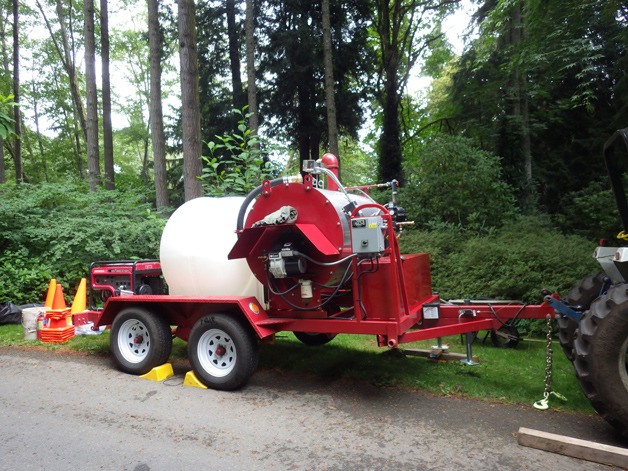The bountiful Bloedel Reserve may not be immune from pesky pathogens, but its expert staff is well-equipped to root them out.
Erin Jennings, Bloedel’s marketing and outreach manager, said the grounds crew had discovered a small number of diseased plants, infected with the pathogen Phytophthora ramorum (known as Ramorum Blight), earlier this year.
The infection started with a variety of Pieris floribunda, also known as mountain fetterbush, and had spread to nine others by the time the USDA surveyed the property in early spring.
Bloedel’s glen gardener, Andy Moss, noticed the first plant, sick with brown leaf spots and a dead branch, and called in Darren Strenge, Bloedel’s plant health manager, to diagnose it. But the symptoms were non-specific, so Strenge sent off a sample to Washington State University. He was surprised when he got a call back a week later – usually he gets an email response with these queries – so he knew he had something serious on his hands.
The pathogen typically produces spores that allow it to survive and spread in soil in plants. While the severity of the disease depends on the host plant and environmental conditions, in Washington, Ramorum Blight is particularly virulent with the potential to cause significant aesthetic and economic damage, Jennings said.
It’s also a federally regulated pathogen, meaning all diseased plants have to be removed and destroyed in compliance with USDA instructions.
At Bloedel, which Strenge believes is the first public garden in the nation to record an outbreak, this meant burning everything within a 2-meter eradication zone.
Then Bloedel staff steamed the soil at a temperature of 50 degrees Celsius for 30 minutes and to a depth of 6 inches, a treatment that’s recommended, but not required for eradication of the fungus.
The first two burnings happened in June, but when the burn ban went into effect, the Bloedel staff had to store the last of the debris, Strenge said.
In October, they finally finished off the rest of it.
Now, they’re hoping to serve as a resource for peer institutions. “Knock on wood, this doesn’t happen to somebody else,” Jennings said. “But if it does, they know they can come to us.”
Blodel Reserve will host a First Detector training from 10 a.m. to 2 p.m. Saturday, Nov. 7.
Described as the “neighborhood watch for plant pests,” First Detectors are trained to recognize and report potentially damaging plant pests and diseases, like Ramorum Blight. Register online at www.brownpapertickets.com/event/2342261.
For more information about how Bloedel handled its “unwanted guest” visit www.bloedelreserve.org.



